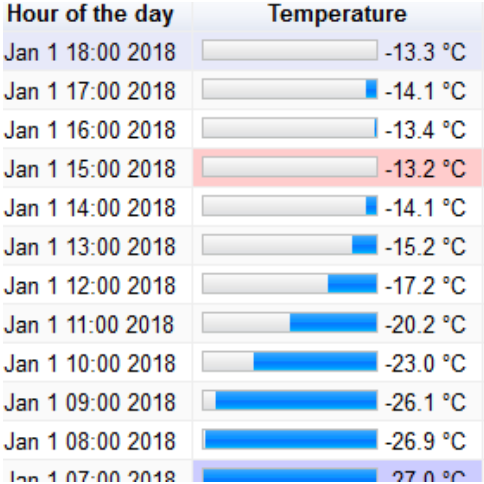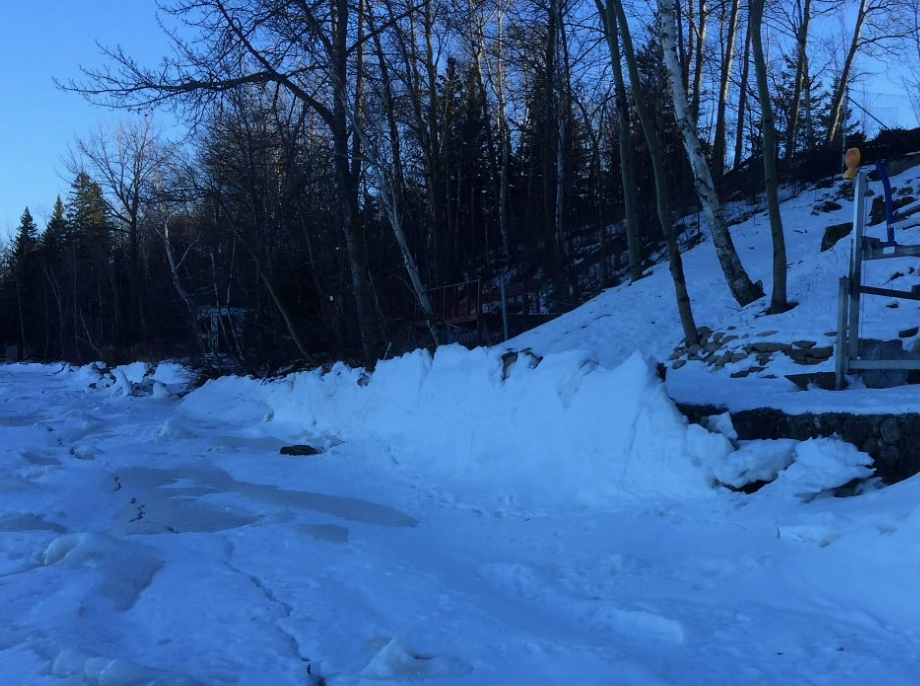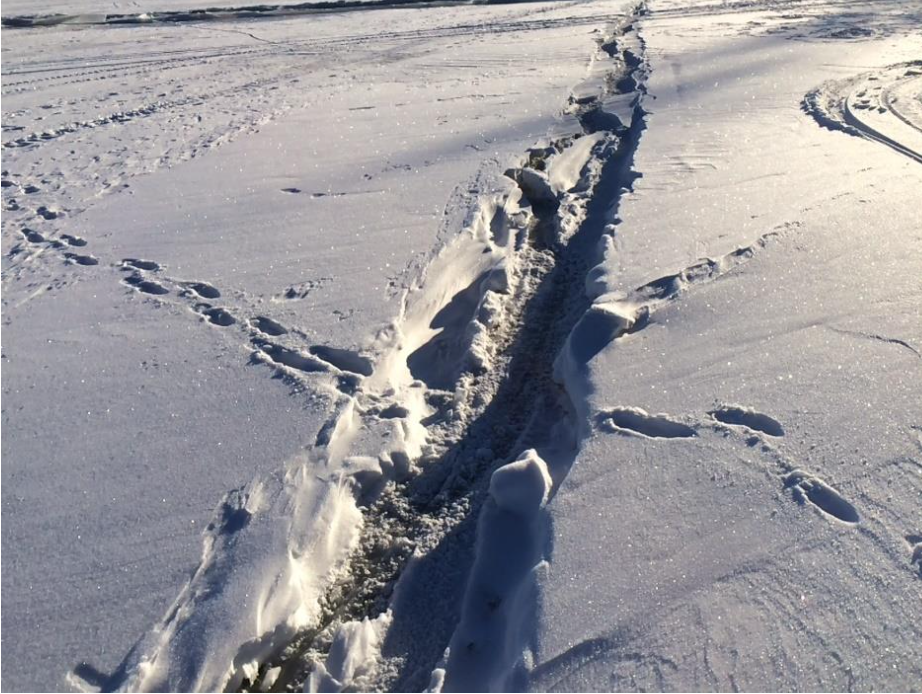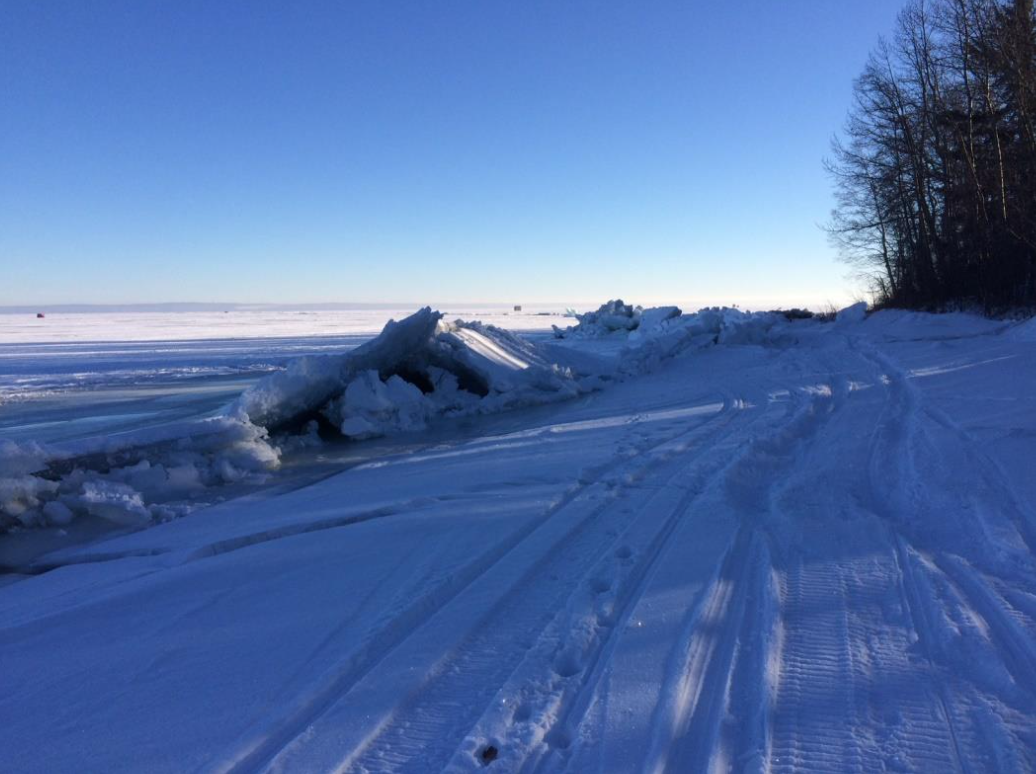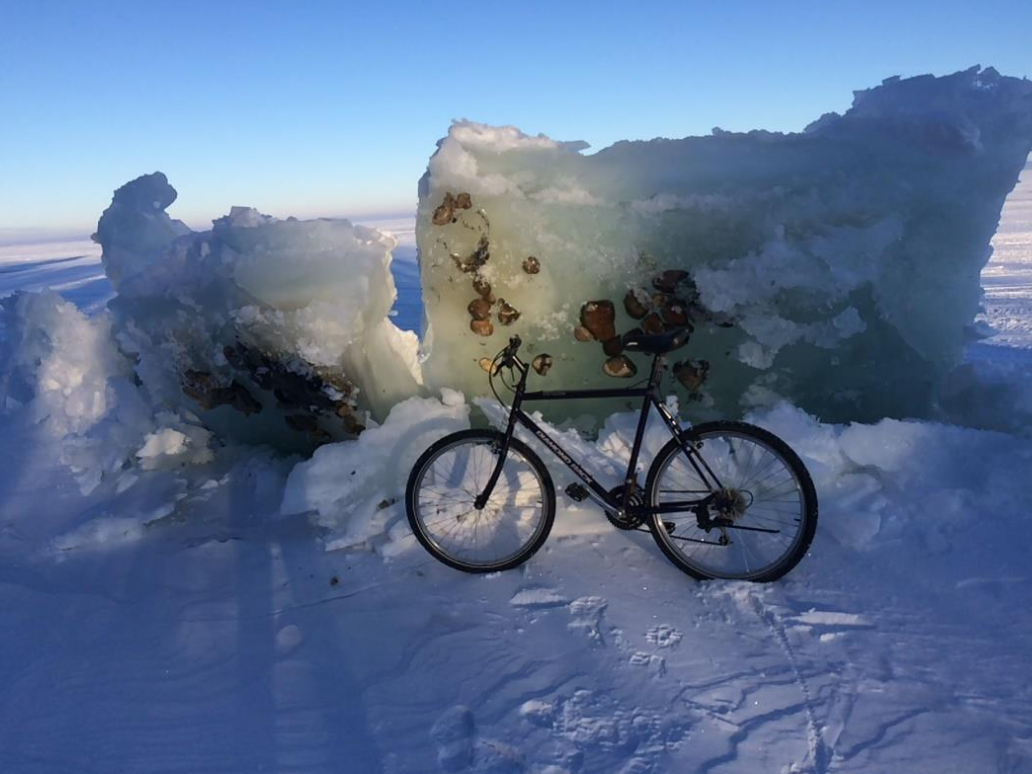2018-01-01 - Ice Quakes
Information, diagrams and photos provided by Don Davidson who observed and experienced this event at Pigeon Lake
On the evening of January 1, 2018, residents who live near Pigeon Lake and other lakes in central Alberta may have experienced a seismic event called an “ice quake.” This event, measured at 2.0 on the Richter scale by Alberta Geological Survey, caused a tremendous bang, shaking homes and, in some cases, damaging buildings and ground near the shoreline. It also caused a great deal of concern by those who experienced the event. The ice quake was caused by the rapid movement of the ice, and although this phenomenon occurs regularly on northern lakes, the cause is not generally understood. This ice quake occurred on a day that had a 14-degree change in temperature over 7 hours (see Figure 1).
Ice quakes, technically known as cyroseisms, occur when there is a sudden release of energy from ice under stress. As ice is formed under dropping temperatures, the internal stresses are released by cracking of the ice, causing some very eerie noises, much like a moaning sound. As ice thickens and becomes stronger, dropping temperatures cause it to contract and crack with a roaring sound. If you are on the ice when it happens, this sound can be a frightening, but it is not dangerous. Because of its low tensile strength, ice fractures before high stresses can develop, and any shock wave produced is not significant.
The really big events are caused by the thermal expansion of the ice that happens when a period of very cold weather is followed by a rapid increase in temperature. As the ice warms, it expands in a manner that can be calculated using the coefficient of thermal expansion (0.00005/degree C). If a lake is 4 km wide, the amount of expansion associated with a 20-degree increase in the temperature of the ice is calculated to be .00005 x 20 C x 4000 m or 4 metres. If the thickness of the ice is not significant, the expansion is usually accommodated by the gradual formation of an ice ridge along the shoreline. But if the ice is thick and has become firmly fastened to the lakebed near the shoreline, it cannot expand, so large internal stresses build up. At some point, the ice will fail and release a tremendous amount of energy. The failure usually takes form of buckling of the ice in the middle of the lake or along the shoreline. In some cases the ice advances onto the adjacent shoreline. This movement can damage yards and buildings or topple trees by displacing their roots.
Figure 1. Hourly recording of temperature in Edmonton January 1, 2018 ( 14 C increase in 7 hours)
If the increase in temperature is gradual, the resulting stresses are dissipated by the “flow” of ice in a manner similar to the flow of glaciers. The ice slowly deforms without any associated cracking.
The photographs below show a crack formed by the contraction of the ice, the expansion of thin ice at the edge of the lake, and the formation of an ice ridge from thermal expansion. It was the formation of this ice ridge that caused the ice quake. Although winds may trigger an ice quake, they were not the cause of this event.
Photo 1. Ice heaves caused by warming temperatures
Photo 2. Ice contraction crack (temperature -28C)
Photo 3. Ice ridges cause from thermal expansion (temperature change 15C)
Photo 4. Ice thrust at Pigeon Lake

